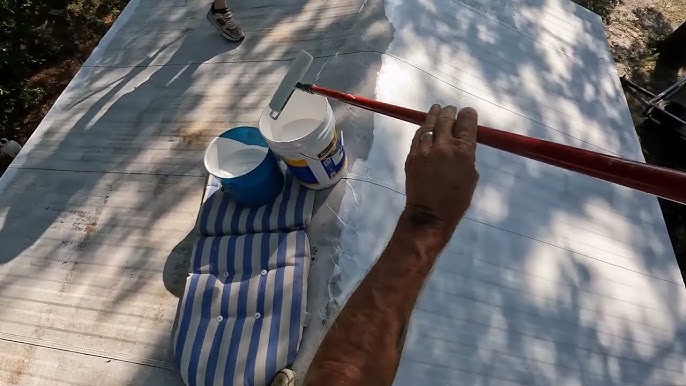Dealing with a leaky roof in a mobile home can be frustrating and stressful. Fortunately, there are many roof leak sealant products available that can help stop leaks and prevent further water damage. Here’s what you need to know about mobile home roof leak sealant:
Table of Contents
Types of Roof Leak Sealants
1. Silicone Sealant
- Description: Silicone sealant is a versatile and durable option for sealing roof leaks. It forms a flexible, waterproof seal that adheres well to a variety of surfaces.
- Benefits: Resistant to UV rays, weathering, and temperature fluctuations. Suitable for both horizontal and vertical surfaces.
- Application: Apply silicone sealant with a caulking gun to cracks, gaps, and seams in the roof. Smooth the sealant with a putty knife for a neat finish.
2. Acrylic Sealant
- Description: Acrylic sealant is a water-based product that dries to a flexible, rubber-like finish. It provides excellent adhesion and durability.
- Benefits: Easy to apply, paintable, and environmentally friendly. Suitable for small to moderate roof leaks.
- Application: Clean the surface thoroughly before applying acrylic sealant. Use a caulking gun to apply the sealant to the affected areas, then smooth with a wet finger or putty knife.
3. Butyl Rubber Sealant
- Description: Butyl rubber www.rfccambridge.com/ is a highly adhesive and flexible product that remains pliable over time. It forms a watertight seal that withstands extreme weather conditions.
- Benefits: Excellent adhesion to various surfaces, including metal, wood, and concrete. Resistant to UV rays and chemical exposure.
- Application: Apply butyl rubber sealant directly from the cartridge or roll onto the surface of the roof. Press firmly to ensure proper adhesion and seal any gaps or cracks.
Tips for Application
- Clean the Surface: Remove dirt, debris, and old sealant from the roof surface before applying the new sealant. Use a wire brush or pressure washer to clean stubborn stains.
- Apply in Dry Conditions: Ensure the roof surface is dry before applying the sealant. Avoid applying sealant in wet or rainy conditions, as it may not adhere properly.
- Follow Manufacturer Instructions: Read and follow the manufacturer’s instructions carefully for proper application and curing times. Apply the sealant evenly and allow it to cure fully before exposing it to moisture.
- Inspect Regularly: After applying the sealant, monitor the roof regularly for signs of new leaks or damage. Address any issues promptly to prevent further water infiltration and damage.
Conclusion
Choosing the right mobile home roof leak sealant is essential for effective repairs and long-term protection against water damage. Consider factors such as sealant type, adhesion properties, durability, and ease of application when selecting the product that best suits your needs. With the right sealant and proper application techniques, you can stop leaks and preserve the integrity of your mobile home roof.


